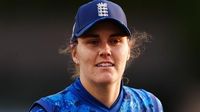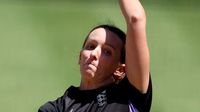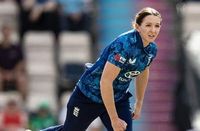The countdown to the ICC Women’s Cricket World Cup 2025 has begun, and the cricketing world is abuzz with anticipation, high stakes, and a few headline-grabbing surprises. As the tournament edges closer, teams are finalizing their squads, ramping up preparations, and grappling with the weight of expectations—and nowhere is this more evident than in India and England, two nations with storied women’s cricket legacies.
India’s women’s squad, led by Harmanpreet Kaur, is set to assemble in Visakhapatnam for a pivotal one-week preparatory camp beginning August 25, 2025. The decision to hold the camp in Visakhapatnam is no accident; it’s a strategic move with an eye on two critical group stage matches against South Africa and Australia, scheduled for October 9 and October 12, respectively. According to Cricbuzz, the camp will not only bring together the 15-member World Cup squad but will also include standby players and potentially members of the India A squad, currently engaged in an unofficial Test against New Zealand. The focus? Sharpening skills and building cohesion ahead of the most consequential fixtures of the year.
The camp is more than just nets and drills. Intra-squad games are on the agenda, providing players with valuable match practice and a chance for the coaching staff to assess combinations. This is, in fact, an extension of the August 2025 camp for India probables, which laid the groundwork for final team selection. Once the camp concludes, the squad will take a brief respite before locking horns with a formidable Australian side in a three-match ODI series starting September 14 in Mullanpur—a series that promises to be a litmus test for both teams ahead of the World Cup.
Venue logistics have also taken center stage this time around. Bengaluru, originally slated as a World Cup host, has been replaced by Navi Mumbai, joining Indore, Visakhapatnam, and Guwahati as Indian venues, while Colombo will host matches in Sri Lanka. India will open its World Cup campaign against co-hosts Sri Lanka in the curtain-raiser, with all matches—save for the marquee clash against Pakistan on October 5 in Colombo—set on home soil.
The sense of occasion is not lost on the team or its supporters. Mithali Raj, one of the game’s most revered figures and a veteran of home World Cups in 1997 and 2013, underscored the magnitude of the moment: “It’s a massive opportunity for the Indian team. They’ve shown great form in the one-day format recently. I’m particularly interested in how the Australian team shapes up for their September tour, they’re the side every team aims to beat in major tournaments. India stands a strong chance, especially with the kind of support and fixtures the BCCI has arranged. The wins in England in both white-ball formats have been encouraging. But as always, contests against Australia and England will be the true tests. This World Cup feels like a defining moment for Indian women’s cricket. I still remember leading the side in the 2013 and 1997 editions held at home, this time around, the stakes and expectations are even higher.”
Her words capture both the optimism and the pressure that surround the Women in Blue. With the Women’s Premier League (WPL) providing unprecedented exposure and a platform for young aspirants, as Raj noted, “The WPL has been a major milestone. It provides a platform not just for young emerging players, but also for those looking to make a comeback. More than just match experience, it brings financial empowerment, sponsorships, and media exposure. Recently, I spoke with young girls from Andhra Pradesh, and nearly all of them mentioned playing in the WPL as their dream. That kind of clarity and ambition is new—and it’s wonderful to see. The league is giving young girls the confidence to aim high, to chase cricket as a serious career, and to play fearlessly.”
The broader context for women’s cricket is equally compelling. ICC CEO Sanjog Gupta spoke to the unique prestige of World Cups: “World Cups stand as the ultimate achievement in every format, be it T20s, ODIs, or Tests. Their prestige sets them apart. Even in the World Test Championship Final, where India and England weren’t playing, viewership and attendance records were broken. That’s the power of a World Cup, bringing together the best in the game, creating moments that capture the world’s attention. The same holds true for the Women’s World Cup, which has grown into a tournament cricketers across the globe aspire to win.”
Gupta also highlighted the impact of equal pay and prize money in elevating women’s cricket: “Implementing equal pay and prize money across ICC events sends a clear and bold message, women’s cricket is just as valuable. This isn't about labels like ‘men’s’ or ‘women’s’ World Cups; it's about cricket. These changes encourage investment, inspire young talent, and help dismantle outdated views on gender in sport. Equality in rewards reinforces the idea that talent and hard work define a cricketer—not their gender.”
Meanwhile, England’s preparations have been rocked by the shock omission of veteran pace bowler Kate Cross from their 15-player World Cup squad. Cross, who has been a mainstay in England’s ODI side since the 2022 World Cup—featuring in 31 of 45 ODIs and taking 39 wickets—found herself left out as selectors opted for a spin-heavy attack. The decision, which Cross described as “savage,” has left her reeling. As she candidly shared on the BBC No Balls Podcast, “What I’m really struggling to get my head around is it all feels like it’s happening so quickly. I’ve just clearly fallen out of favour with Lot [head coach Charlotte Edwards]. I haven’t processed it. It’s still really raw.”
Cross’s exclusion is made starker by the absence of fellow seamers Katherine Sciver-Brunt and Anya Shrubsole. The trio, with a combined 377 ODI wickets, will not be present as England’s new generation of quicks—Lauren Filer, Lauren Bell, and Emily Arlott—shoulder the burden. Selectors have placed their faith in four specialist spinners: Sarah Glenn, Linsey Smith, Sophie Ecclestone, and Charlie Dean, banking on subcontinental conditions to favor spin. Still, Cross’s recent form—three wickets in four ODIs in 2025 and eight wickets in six matches for Northern Superchargers in The Hundred—made her omission a bitter pill to swallow. “Being in the best XI is a different conversation but not being on the plane – it feels savage,” she said. “The messages I’ve had from everyone have been amazing. And ultimately, I’m not going to be playing some cricket – it’s minuscule in that sense. But it’s hard to take because I don’t feel like I’ve done enough to deserve not being on that plane.”
England will kick off their World Cup campaign against South Africa on October 3 in Navi Mumbai, entering the tournament with a blend of youthful promise and the challenge of filling the shoes of their seasoned campaigners.
As the Women’s Cricket World Cup 2025 approaches, the stage is set for a tournament that promises not just high-octane cricket but also a celebration of progress, resilience, and the unstoppable rise of women’s sport. With India’s preparations in full swing and England navigating the turbulence of transition, fans can expect drama, emotion, and unforgettable moments as the world’s best battle for cricket’s ultimate prize.






